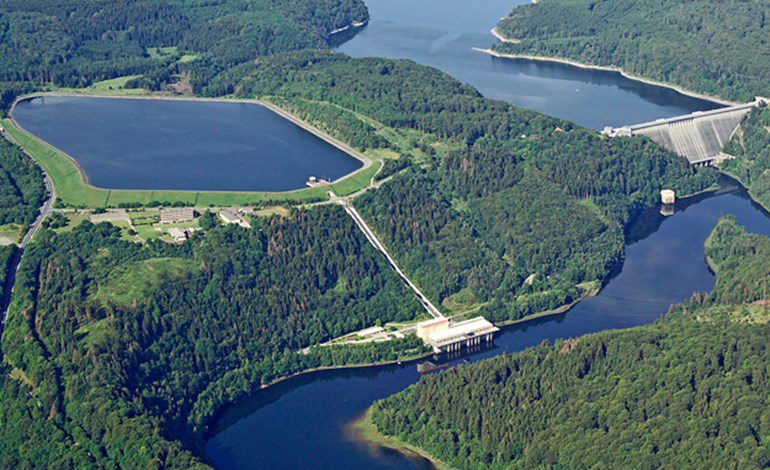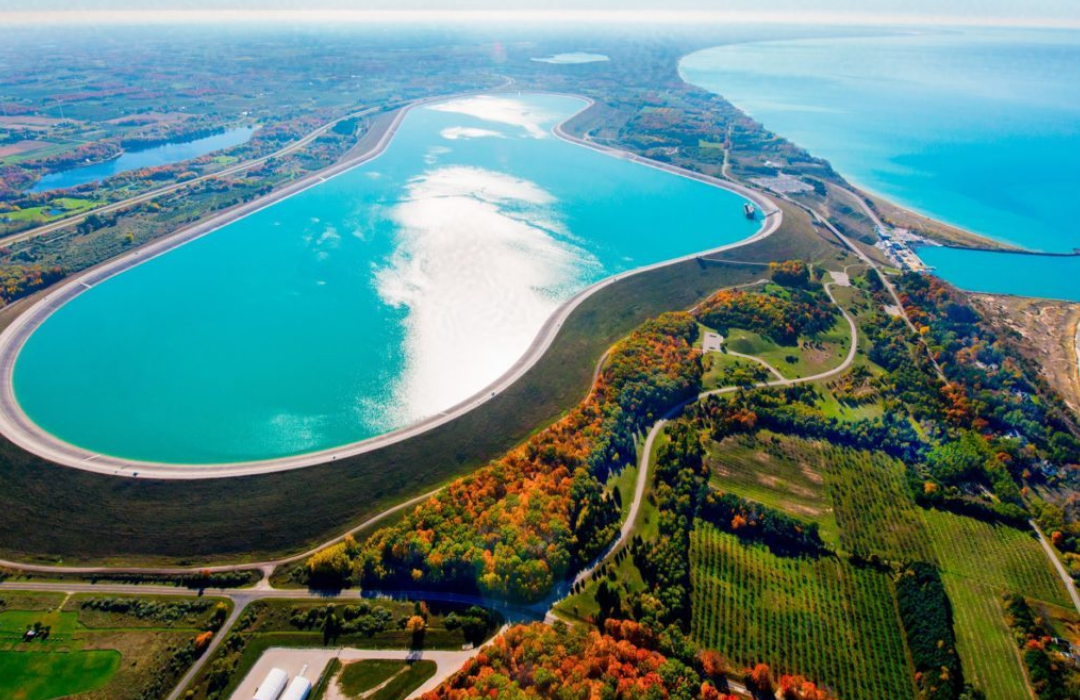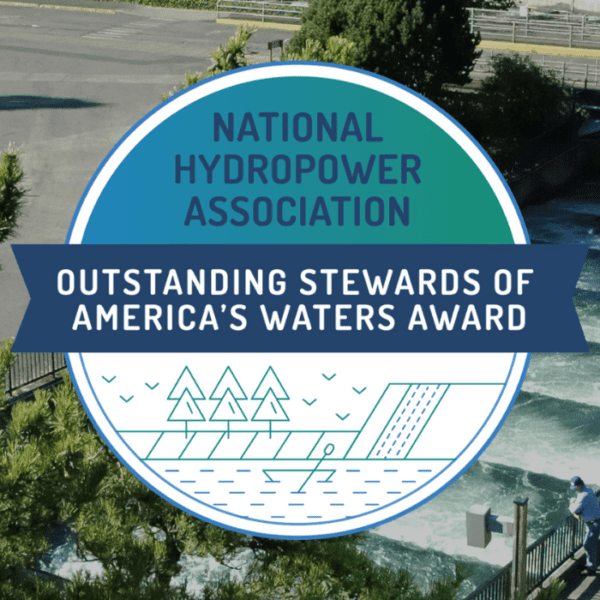*Sponsored Content
Pumped storage hydropower is a proven technology that has served utilities for generations. Now, with the push for 100% renewable energy, pumped storage is experiencing a sort of renaissance as a bulk storage solution for renewable energy’s intermittency and as a replacement for lost services as conventional fossil fuel plants are retired.
Pumped Storage provides a utility-scale, energy-efficient, and dispatchable means of energy storage that can be dispatched to provide energy capacity and grid reliability. Pumped storage energizes the grid during peak demand or when renewable sources are not providing sufficient power or energy, and it’s the best technology for providing ancillary services that transmission systems rely on to maintain stability and control of 60 Hz system frequency.

So why hasn’t the technology taken off?
A major factor is competing alternative technologies. Due to their smaller size and modularization, battery energy storage systems are less expensive and faster to deploy and scale to capacity needs. Despite their non-renewable status, natural gas power plants offer lower emissions than other fossil-based generation alternatives, quick ramp-up, and both base and peak load power, making them a convenient solution in the short term.
If you add pumped storage’s high initial capital costs, and the fact that there is not an established future’s market for ancillary benefits, there is currently marginal financial incentive to invest in its development. Finally, even though pumped storage has demonstrated it has a much longer operating life than all other technologies, it requires a long-term capital investment (40 years+) while other technologies have a shorter rate of return of 20 years or less.
How do we overcome these barriers and make pumped storage more economically viable and attractive to investors and developers?
1. Government mandates and financial incentives: Pumped storage is growing faster internationally in countries where governments are taking a vested interest in the technology. Whether government funded, like in China, or through public-private partnerships like in Australia and parts of Europe, there is government support for pumped storage to complement renewable generation and decrease their dependence on fossil fuels.Here in the U.S., the recent Infrastructure Investment and Jobs Act (IIJA) has set aside $355 million from 2022 to 2025 to support energy storage demonstration projects, including pumped storage. An additional $150 million, over the same period, is for projects focused on long-duration energy storage technologies. This financial incentive, along with others, like investment tax credits available through the Inflation Reduction Act (IRA), low-interest loans, or tax credits growth have increased interest and early-stage development of pumped storage projects. Setting targets or mandates for using a certain pumped storage energy capacity may prove beneficial as well.

2. Market Design Modifications: Encouraging energy market leaders to work with Independent System Operators (ISOs) to adjust market rules and mechanisms could increase pumped storage’s market value. An example may be introducing a capacity tariff or rate for ancillary services, such as spinning reserve, black start, quick ramp-up, voltage regulation, and rotating inertia to ensure grid stability and reliability. Assigning a value for reliable capacity and grid stabilization during peak demand times would allow pumped storage to charge for dispatchable and flexible power services and thereby increasing its market competitiveness. Putting these market drivers in place would establish the foundation of a futures market for ancillary benefits and also provide revenue certainty to pumped storage investors pushing project proformas to a more favorable return on investment.
*Resource Adequacy (RA) is also becoming increasingly important and valuable as conventional fossil plants are retired. Ensuring RA is properly described in grid tariffs and markets is critical to a reliable electric grid and pumped storage’s financial picture. Current and future pumped storage projects provide dispatchable capacity for frequency and voltage control in addition to RA capacity.
3. Classify as a Transmission Asset: Treating pumped storage as a transmission asset and recognizing it as an integral part of grid infrastructure can grant utilities access to regulatory support and rate structures exclusive to transmission. Capital costs can be included in capital plans and recovered through rates, and they may even experience additional regulatory advantages such as streamlined permitting and siting processes that shorten deployment schedules and speed to market. It may also make it easier for pumped storage to participate in those ancillary markets and other various grid services to earn revenue.
4. Long-Term Power Purchase Agreements (PPAs): Offering long-term PPAs to major power users at competitive rates can provide the revenue certainty developers need to secure financing for pumped storage projects. Data centers are the largest purchasers of PPAs from solar and wind farms. According to a Data Center Dynamics article, published in May of 2022, Amazon, Microsoft, and Google purchased a combined 31 GW of PPA power. However, Data centers require consistent 24/7 power. Due to variance and fluctuations, it’s nearly impossible for a data center to receive all green power from a renewable PPA alone. So, they must supplement with other power sources (including fossil fuels) to avoid downtime. Pumped Storage is a viable option to balance out a PPA’s renewable energy portfolio and enable major power users to truly go 100% renewable.
5. Re-invent Pumped Storage as Scalable, Modular Energy Storage: One of the driving factors around pumped storage’s high capital costs is the physical size and capacity typically in the 400MW to 1600MW range. Designing facility capacity and longevity to better align with solar and wind’s relative capacity and capital cost would help pumped storage be more cost compatible with solar and wind by helping to reduce the up-front costs and deployment timelines. The reduced capital cost also represents a reduced risk to investors which could spur development.

The pumped storage industry must continue to raise public awareness and educate the market on the benefits of pumped storage, including the long life and lower life-cycle cost of pumped storage. By further advocating for policy changes, innovative market reform, and technology advancement, we can effectively stimulate pumped storage’s growth and cement its role as a valuable component of a sustainable and resilient energy system.












